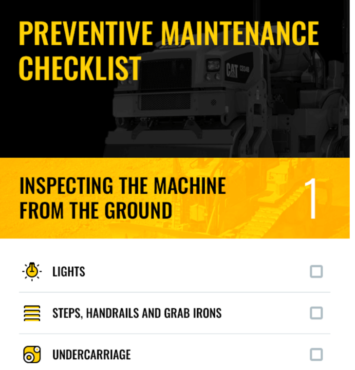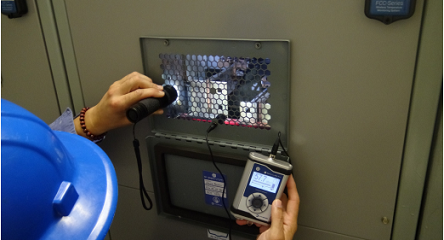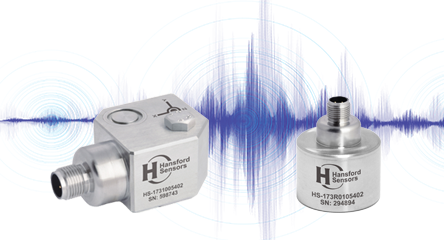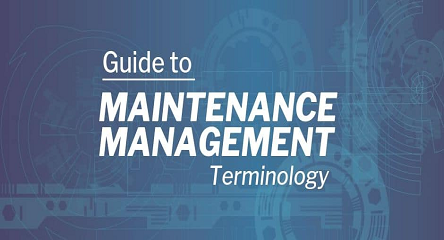Two ways to specify an inspection are implicitly and explicitly. Both are used in maintenance, and both have their place. To start, let’s review the definitions:
Explicit: in a clear and detailed manner, leaving no room for confusion or doubt. The explicit inspection description will have detailed things to look for, have standards or ranges (like running amps under load: 50-70), and might have photographs and drawings.
Implicit: implied though not plainly expressed. The implicit inspection description has few words and, if any, drawings will be very general ones.,
An implicit list requires a technician to have significant experience in that specific equipment or only superficial requirements. The implicit list is a general reminder. An example of an implicit PM in construction equipment:

Generally, construction mechanics using lists like this follow a protocol they were taught or personally developed over the years. The issue with this type of list is that each person using it will do different checks.
This state is OK when the intent is to sweep through an area to look for big things. In an example of this usage, you might have a building tenant do a monthly inspection task for their building basement for water, visual mold, and natural gas or sewer smells. In that type of tasking, the implicit list is fine. Your overriding intent was to get someone to enter an area with their eyes and ears (and nose) open.
That type of inspection is more of an almost security sweep through an area than a detailed look.
Explicit tasking, on the other hand, requires necessary detail– PM checklists should provide enough detail that new technicians can realistically complete the task by following the list. Provide them with photos or diagrams– inspection checklists should include visual representations of the instructions to make the job easier and clarify any ambiguity. Be as concise as possible– Every task on an inspection checklist should have explicit action and goal associated with it so you can ensure maximum efficiency
According to Fiix (a Rockwell Automation Company), PM checklists create a standard way to do tasks, which leads to reliable outcomes. There’s no guesswork or miscommunication, reducing the chances of error.
A senior mechanic might be annoyed by a detailed and explicit list because it seems to discount their expertise. It might seem petty to them. But, if followed, the list ensures that everyone does the same activity each time.
Without explicit tasking making changes, such as PM optimization, are very difficult to implement because everyone is doing their own thing.
When designing inspection, tasking keeps in mind your goal. If you expect to pick up specific failure modes, you’ll have to look for them. If you want to avoid gross failures developing an implicit list will be fine.
Implicit tasking: Check tires (looking for apparent defects or deterioration like baldness, sidewall damage). Here we are making immediate safety checks
Explicit tasking: Measure tread depth and individual tire pressure and record. Look for uneven wear patterns. Here we are trying to improve tire life and fuel efficiency and do a safety check.
Explicit or implicit? It depends.







Good explain about of the inspections and task that must carry out on the PM
Joel- Good post. I’ve always felt there was more room for implicit checklists when preceded by training and understanding. Yes, a checklist with little detail will produce varied results, but with a little direction and forethought they could produce great results. In my opinion, explicit checklists can difficult to maintain and use. I’ve personally witnesses “PM Checklists” that are dozens of pages long and still go back and forth between lots of detail and not enough. Most mechanics I worked with strongly resisted anything like that. “The Checklist Manifesto” is a great resource and read for anyone looking to get… Read more »
Bill, I completely agree. The critical missing conversation is training and valid examples (like photos of good and bad items). I agree with multipage detailed checklists are hard to use and suffer from irregular usage.
At the end of the day, my beef has always been with checklists that say “check the valve”, or “inspect the brakes.” By the way I too loved The Checklist Manifesto. Great to hear from you and I hope you and the family are healthy and safe.